Driving Anxiety: Causes and Ways to Overcome It
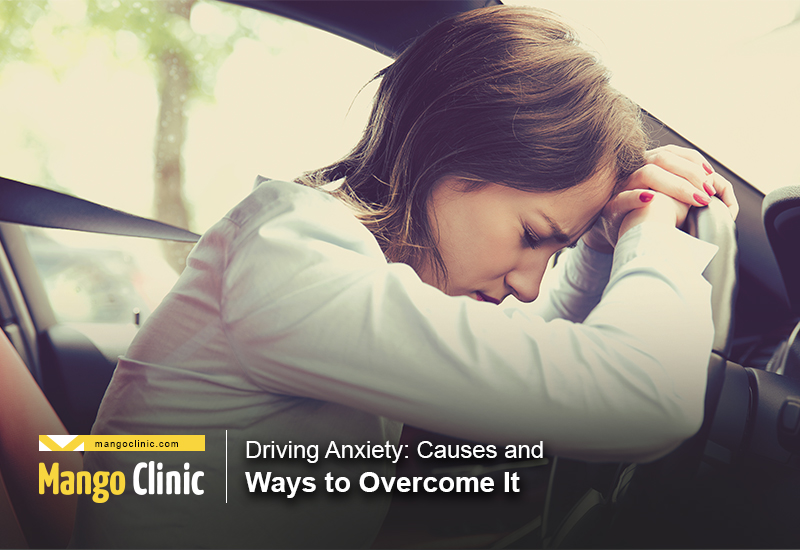
Experiencing driving anxiety as a beginner driver is not unusual or common. However, if it is experienced often or over time, then there is a problem. If you experience it every time you are about to drive, you have driving anxiety and it is not normal.
Looking for proper driving anxiety treatment? Click the button below to book your appointment.
Table of Contents
1. What Is Driving Anxiety?
Those who experience driving anxiety do so at different levels. In some, it may last just a short time. The anxiety may be caused by thinking about driving on a road that is particularly busy, where they had an accident or that is dark or has another form of potential danger. However, the feeling soon passes and you can drive without feeling anxious.
Others experience driving anxiety to a level that interferes with their everyday life. They cannot drive on certain roads, cannot drive for long distances, and will only use side roads or they do not drive at all.
Understanding General Anxiety
Anxiety is the way the body instinctively reacts to stress and danger. It is the way the body protects and prepares itself to either fly or fight which is known as the fly or fight response.
When your anxiety is at low levels, this response will be felt as being nervous or startled. Apart from driving, this may be caused by situations like a job interview, going on a date with someone new or giving a speech, or doing a presentation in front of a crowd. It may also be taking a driving test or driving for the first time.
When it comes to anxiety, there are other factors that can affect how intensely it is felt. It may be intensified by pre-existing mental conditions, genetics, and environmental factors.
How Common Is Driving Anxiety?
General anxiety and anxiety disorders are widespread in the U.S. According to the Anxiety and Depression Association of America (ADAA), 40 million adults in the U.S aged 18 years and over, or 18.1 percent of the adult population have an anxiety disorder including driving anxiety.
According to ‘The Zebra’, an insurance comparison site, approximately 66 percent of Americans experience driving anxiety. It is more common in women than men with 75 percent of women experiencing it compared to 55 percent of men. It is also more prevalent in the younger generation with those aged 50 years and above experiencing it much more rarely than younger drivers.
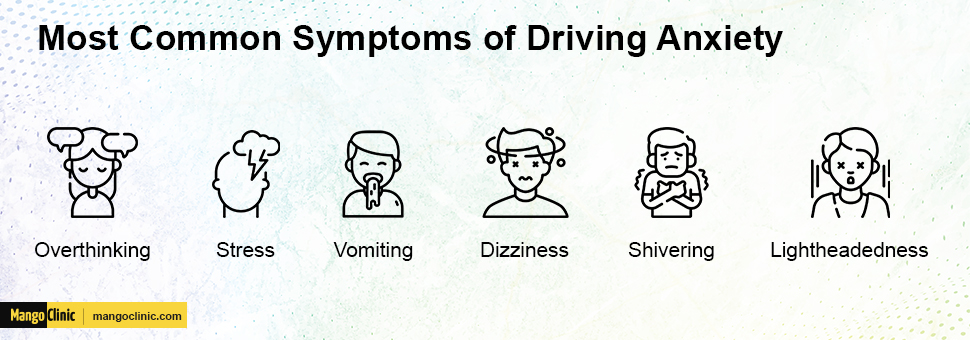
Types of Driving Anxiety
There are different types of this form of anxiety. The different types are triggered by different things. For instance, research by ‘The Zebra’ also indicated that 26 percent felt anxious when they had to merge onto a highway and 19 percent when they needed to back up or reverse.
Types of driving anxiety include:
- Traumatic Experiences on the Road
For others, the anxiety is triggered by a past traumatic experience when they were on the road. Being involved in a car accident would be the most traumatic experience. However, driving anxiety can also be caused by having a loved one in an accident that was fatal or almost fatal or witnessing a bad accident up close.
Other experiences that can be traumatic are getting lost such as when driving in a new area and being on the road during a bad storm, flood, or another type of natural disaster. Being on the receiving end of another driver experiencing road rage can also be traumatic.
- Being Afraid of Driving Alone
For others, driving anxiety is triggered by driving alone. This may be the case when they have to drive in an area that is new to them or that is known to be hazardous because of robberies, accidents, or poor road conditions. Such a person may be perfectly driving as long as they have someone else in the car.
They may feel anxious thinking about the possibility of getting into an accident because the road is so bad or getting robbed or attacked because it is known for that. They may also worry about running out of gas and being stranded or being unable to contact anyone for help if they need it when traveling long distances.
Save yourself from the anxious feelings. Click the banner below to book your appointment.

- Being Afraid of Mental Breakdown
People who have a mental condition related to anxiety such as general anxiety or panic attacks may feel anxious about having a meltdown when driving. They may worry about losing control of a vehicle when this happens. A meltdown or panic attack may come in form of a fast-beating heart, palpitations, tightening of the chest, or difficulty breathing. Others may feel light-headed, nauseous with or without vomiting, and excessive sweating.
- Fear of Exaggerated Possibilities of Danger
An anxious person gets that way because they are being controlled by the thought of possible scenarios unfolding even though there is very little possibility of this happening. The same is true about driving anxiety. It is caused by playing out worst-case scenarios in the head and losing confidence about driving safely to a destination. For some, it is all in the mind.
Interestingly, it is not only drivers but also passengers who may experience driving anxiety. The causes are the same (as those above) but the most common trigger is having been involved in or witnessing a bad accident or losing a loved one or having them seriously injured in an accident.

Symptoms of Driving Anxiety
Just like the symptoms of anxiety are different in different people, the symptoms of driving anxiety are also different. What they have in common is that they cause physical symptoms that disrupt the clear thinking and cognitive ability that is needed to drive safely.
The table below shows the physical and mental symptoms of driving anxiety:
| Physical Symptoms | Mental Symptoms |
| Nausea and/or vomiting | Overthinking |
| Sweaty palms | Racing thoughts |
| Rapid heartbeat | Panic |
| Labored breathing | Stress |
| Choking | Worry |
| Dizziness | Difficulty concentrating |
| Tight or painful chest | Feeling of dread |
| Lightheadedness | High alertness |
| Chills and/or shivering | Irritability |
| Head and/or stomach aches | Difficulty sleeping |
| High temperature | Changes in appetite |
2. Risks and Complications of Driving Anxiety
Driving anxiety is particularly bad in those who have other kinds of mental disorders. For instance, those who suffer panic attacks or have certain phobias that are not related to driving are more likely to suffer driving anxiety. It could then become a cycle with one form of anxiety or the mental disorder triggering or worsening the driving anxiety or vice versa.
Additionally, driving anxiety can cause or worsen physical symptoms that can cause serious or long-term effects. Driving anxiety and other types of it can cause serious or long-term physical symptoms and conditions such as:
-
Peptic Ulcers
A study into whether psychological stress increases the risk for peptic ulcers found that it does. In the study that had 3,379 Danish adults who didn’t have a history of ulcers, 76 were diagnosed with ulcers. Looking at the stress index scale, the incidences of ulcers were significantly higher in subjects who had high-stress levels.
While research into the correlation between stress or anxiety and peptic ulcers is ongoing, a number of possible causes have been forwarded. One is that high anxiety or stress levels could cause gastrointestinal disturbances which result in the formation of peptic ulcers. Another school of thought suggests that it is peptic ulcers that cause or contribute to the mental symptom of anxiety in the first place.
A third possibility is that peptic ulcers are caused by genetic and environmental factors. For instance, a person with a high-stress job could develop anxiety because of the job or the environment they work in and the anxiety could manifest in the form of ulcers.
-
Asthma Attacks
Those with respiratory problems who also have driving or another form of anxiety could have the problems manifest as asthma-like symptoms or actual attacks. However, just as is the case with peptic ulcers, anxiety could trigger an asthma attack or symptoms.
This is why a person with driving anxiety could have serious breathing problems whether they are asthmatic or not. This is because when the fight or flight response is triggered by high anxiety levels, chest muscles get tight and tense which makes it difficult to breathe.
Get immediate anxiety treatment and live a normal life. Click the button below to book your appointment.
-
Cardiac Problems
Frequent or long-term anxiety can cause problems with the heart such as heart diseases, heart failure, and stroke. Anxiety causes these problems when the levels of the stress hormone (cortisol) rise as anxiety levels rise. High or frequent bouts of anxiety can also cause blood pressure to rise which can damage the heart and the surrounding circulatory structures.
-
Frequent Migraines
A common complaint in those who suffer from driving anxiety is headaches or migraines. These start at the thought of having to drive somewhere or when they sit in a car. It is possible that people who have driving anxiety that causes headaches or migraines may develop other forms of mental disorders such as depression. Research into this theory is ongoing.
-
Vision Problems
It is possible to develop vision problems because of driving anxiety. When anxiety is high and there is an accompanying physical symptom such as a panic attack or migraine, the brain produces high levels of adrenaline levels. This is part of the fight or flight response. High adrenaline levels can increase eye pressure with the effect of causing vision problems. These problems include:
Tunnel Vision – Where central sight is lost and only peripheral vision is available.
Floaters – These are dark shapes that float around the eye in the form of lines, spots, threads, or interlinked threads that resemble cobwebs.
Flashes of Light – Which are spots or pinpricks that interfere with the field of vision.
Blurred Vision – Where focus and sharpness are lost and objects look blurred.
-
Back Pain
Another possible physical symptom of anxiety is back pain. This is the result of the anxiety having an effect on the muscles and causing them to be tense. The tension leads to stiffness and pain which can be serious enough to change normal posture. For instance, it can cause the back to start to bend.
When the spine is incorrectly aligned, the weight of the body is no longer evenly distributed. Rather, most of the weight is placed on the lower back which can cause chronic back pain and/ or spasms. Relief can be found in massages, painkillers, and heating pads but the long-term solution relies on addressing the cause of anxiety.
Contact us now for proper anxiety treatment or click the banner below to book your appointment.

3. What Are the Causes of Driving Anxiety?
Driving anxiety can be caused by clinical as well as non-clinical factors. The most common ones are:
-
Traumatic Past Experiences
Experiences on the road that were traumatic are a very common cause of driving anxiety. The trauma may have been experienced in the form of being involved in a road accident, witnessing one, losing a loved one in one, or having them sustain a serious injury.
Traumatic experiences are recorded in the brain. This is why being in a similar situation triggers the same feelings that were experienced during the incident. This is why getting professional help after going through a harrowing experience is important. It can stop anxiety from becoming a long-term problem.
-
Post-Traumatic Stress Disorder
Post-traumatic stress disorder (PTSD) is a type of anxiety disorder that develops after one goes through or witnesses a traumatic experience. It develops when help is not sought after the experience. Help may be offered in the form of therapy with a mental health expert and may include taking medication.
-
Lack of Driving Skills
Research carried out by three scholars J. Taylor, F.Deane and J.Podd indicated that there are non-clinical causes of driving anxiety. One is a lack of driving skills. A person who has just got a license and can now drive a car without someone else in it may feel anxious about getting behind the wheel. Ideally, this anxiety goes away after a while as a new driver gains confidence.
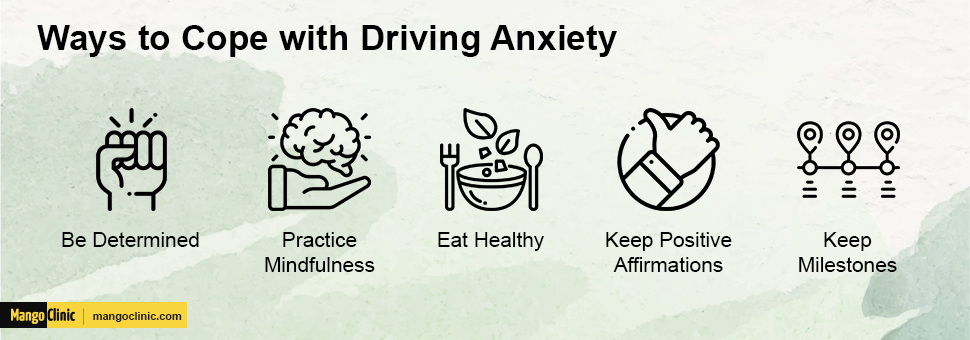
-
Low Levels of Blood Sugar
Low blood sugar which is known as hypoglycemia in medical terms can cause driving anxiety. This is particularly the case for those who have diabetes and/ or blood pressure problems. Low blood sugar can shock the body and cause anxiety with the thought that they may have a problem driving because they are feeling weak.
-
Binocular Vision Dysfunction
Known as BVD in short, this dysfunction is caused by a misalignment that causes both eyes to stop working together correctly so that you stop seeing single images clearly. When this happens, the brain attempts to correct the misalignment which can cause the eyes and the muscles around it to be overexerted.
If the problem is severe, the result is double vision or double imagery. The problem can be so severe that it becomes debilitating and presents with other symptoms such as vomiting, dizziness, and motion sickness. BVD can also trigger driving anxiety because a driver becomes fearful when they can’t see the road clearly. The anxiety may escalate into a panic attack along with the other symptoms.
-
Avoidance Behavior
While it is more of a reaction than a cause, some drivers may develop a tendency to avoid driving so that they don’t experience anxiety. However, this compounds the problem because going without driving for a long time would make you even more anxious when you finally decide to do so.
-
Auto Nomophobia
There is an emerging dimension that has come up as a result of the new development of self-driving cars. They are a novelty and are becoming more and more popular in developing countries. Unfortunately, some have been involved in accidents which have made some people fearful or anxious about driving them.
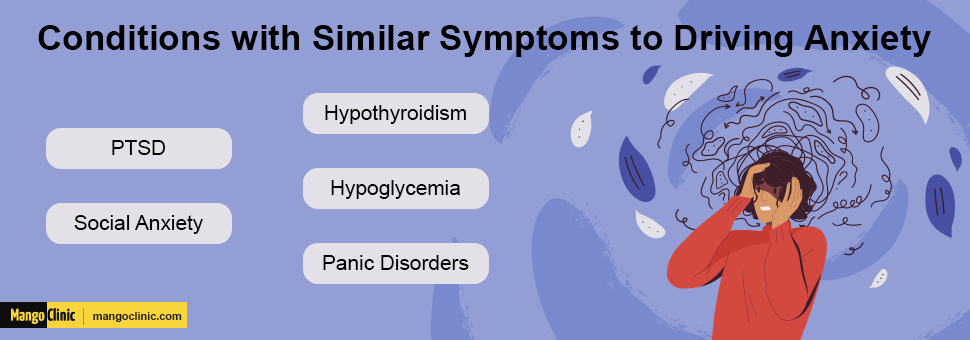
4. Do I Have Driving Anxiety? Diagnostic Measures
Driving anxiety is not recognized as a mental health condition. This is because there are no clinical diagnostic criteria for it. A mental health expert who may be a therapist, psychologist, or psychiatrist can only diagnose it. The expert will analyze the symptoms and engage you with questions to determine if your problem is driving anxiety.
It is important to be completely transparent during a session with a therapist. It is the only way to allow them to make an accurate diagnosis and give you the help that you need. Your therapist may want to get into your family history. This is because a family history of anxiety disorders and phobias can have a play in your condition
The questionnaire below will be helpful in assessing yourself to determine if you have driving anxiety. Note that it is not a therapist diagnostic tool but a general guide for personal use. A diagnosis can only be done by a certified mental health care professional.
Driving Anxiety Questionnaire
| Questions | Option A | Option B | Option C |
| Do you drive at the moment? | Yes | Sometimes | Never |
| Does driving make your feel anxious? | Yes | Sometimes | Never |
| Do you sweat excessively when driving? | Yes | Sometimes | Never |
| Do you get palpitations when driving? | Yes | Sometimes | Never |
| Can you drive to familiar places without a problem? | Yes | Sometimes | Never |
| Have you had a panic attack while you were driving? | Yes | Sometimes | Never |
| Have you ever been involved in a serious accident or witnessed one? | Yes | Sometimes | Never |
| Does driving or the thought of it make you feel low? | Yes | Sometimes | Never |
| Do you find it challenging fulfilling obligations like getting to work or school because you are anxious about driving there? | Yes | Sometimes | Never |
| Do you think of possibly causing or getting into an accident or other mishap when you are driving? | Yes | Sometimes | Never |
Key:
- For each question you chose A, give yourself 10 points
- For each question you chose B, give yourself 5 points
- For each question you chose C, give yourself 0 points
Results:
Score 61-100: Severe Anxiety
Score 41-60: Moderate Anxiety
Score 21-40: Mild anxiety
Score 0-20: Normal
It is important to note that there is a similar condition known as panic disorder. Panic while driving presents with symptoms that mimic those of driving anxiety so it is easy to confuse the two. Other mental health conditions that have similar symptoms to driving anxiety are:
- Post-traumatic stress disorder (PTSD)
- Social anxiety
- Phobias such as that of heights
- Disorders related to depression
- Hypothyroidism
- Hypoglycemia
- Panic disorders
- Drug addiction
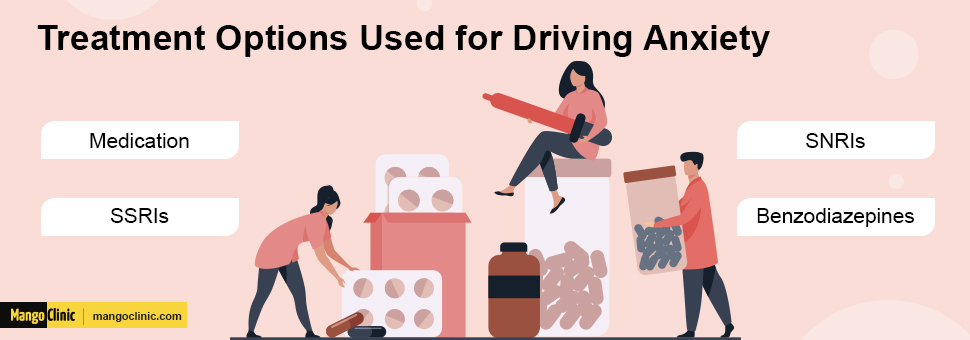
5. Driving Anxiety Treatment Options
No standard protocol has been developed for treating driving anxiety. However, there is help in the form of a multi-modal treatment plan that can be developed by a mental health expert. This is done based on your symptoms and the level of anxiety you feel when it comes to driving.
The plan may include therapy, counseling, medication, and other forms of intervention as detailed below:
-
Medication
There are medications that can be prescribed for driving anxiety. The types of medication that may be prescribed are:
Selective Serotonin Reuptake Inhibitors (SSRIs)
These are the most common types of antidepressants. They are considered safe compared to other types. SSRIs work by enhancing the function of brain nerve cells which has the effect of extending the reuptake process of serotonin. As long as serotonin is available to the nerve cells, the levels of anxiety go down.
The brands of SSRIs that are most commonly prescribed for treating anxiety including driving anxiety are:
- Citalopram (Celexa)
- Escitalopram (Lexapro)
- Fluoxetine (Prozac)
- Fluvoxamine (Luvox)
- Paroxetine (Paxil)
- Sertraline (Zoloft)
Benzodiazepines
Also known as benzos, this is a class of drugs that has a core chemical structure that fuses a benzene ring and a diazepine ring. They work on the receptors in the brain and calm down the activity in specific areas which has the effect of reducing feelings of anxiety and depression. The most commonly prescribed benzos are:
- Diazepam (Valium)
- Alprazolam (Xanax)
- Lorazepam (Ativan)
- Flurazepam (Dalmane)
Serotonin-Norepinephrine Reuptake Inhibitors (SNRIs)
SNRIs work like SSRIs and they are also in the category of antidepressants. They suppress the reuptake of both serotonin and norepinephrine which are important for the regulation of moods. The most commonly used SNRIs are as follows:
- Desvenlafaxine (Pristiq)
- Duloxetine (Cymbalta)
- Levomilnacipran (Fetzima)
- Venlafaxine (Effexor XR)
Looking for medicinal anxiety treatment? Click the button below to book your appointment.
What Is the Best Medication for Driving Anxiety?
This is best determined by your mental health care provider based on your symptoms and diagnosis. Depending on their findings, you may be put on medication on a trial basis. You will be observed to see the effect of the medication on your condition. When you are re-evaluated after a given period of time, your dosage or even your prescription may be changed.
Therapy for Driving Anxiety
Your doctor may also recommend therapy to treat your driving anxiety. This may be your only form of treatment to start with or it may be done along with medication. The following forms of therapy may be used:
- Cognitive-Behavioral Therapy (CBT)
CBT is the primary form of therapy done for treating mental health disorders. It works by pinpointing your risk factors and causes of driving anxiety so that you are equipped with coping mechanisms. CBT works through mindfulness with the goal of creating new thought patterns to replace old, negative ones.
Research has established that this form of therapy works with managing symptoms and improving the quality of life of those who have anxiety. Online CBT therapy has also been found to work. Research has also established that it works just as well as face-to-face therapy.
- Exposure Therapy
This form of therapy works to treat the different causes of anxiety. It works by exposing you to your fears and triggers bit by bit under the supervision of a therapist. For instance, to treat driving anxiety, you would be taken to a car, talked into getting into it, and even starting it. Through it all, you will be exposed to the underlying causes of your anxiety. Once you understand it, you can face them, handle them and get over them. They stop being something you can’t control.
- Driving Anxiety Counseling
Counseling is another form of treatment that has been found effective for treating mental disorders including driving anxiety. It provides a release for what is inside you that responds to certain situations or stimuli with anxiety. In talking about it, you can work with a therapist to come up with ways to cope with these stimuli in other ways rather than with fear or anxiety.
How Long Does It Take to Overcome Driving Anxiety?
The period of time it will take for you to go through one form of treatment and overcome driving anxiety differs from person to person. This is because everyone has different triggers, symptoms, and medical treatments that require different treatment options and periods.
Some people require treatment over a few months. Others need up to a year or more. Being consistent with a treatment plan for however long it lasts is the key to overcoming driving anxiety.
Get yourself treated for anxiety with a proper treatment plan. Click the banner below to book your appointment.

6. Effective Ways for Coping with Driving Anxiety Symptoms
Perhaps you are wondering what else you can do to overcome your anxiety before you seek professional help. If your anxiety is mild, you may try the following to overcome it. You can also take the steps below alongside getting help from a professional.
1. Being Determined to Overcome the Problem
It is important to have the right frame of mind to overcome driving anxiety. You have to be positive and determined despite having your mind clouded with fear when you think about worst-case scenarios. To get to the end of the tunnel, you have to be able to see the light that is there and follow it.
One way to calm your fears down is with relaxation exercises. Progressive muscle relaxation is one of them. With this technique, you relax your body parts one at a time while taking deep breaths. For instance, you can start with your arms, back and work your way downwards or start with your feet and work your way up. Practicing such techniques before you drive will be helpful.
2. Practicing Mindfulness
With this technique, you take some time to be still, block out everything else and focus on avoiding or reducing your anxiety. It is a lot like meditating. Start by sitting somewhere quiet. Inhale deeply, hold your breath for a few seconds and exhale slowly. Focus on this breathing pattern. Believe that you are releasing your anxiety when you breathe out and inhaling confidence and relaxation when you breathe in.
3. Healthy Eating
It is said that you are what you eat and it is true. Healthy, wholesome food nourishes not only your body but also your mind. Unhealthy choices like junk food and sugary carbonated drinks or beverages like a lot of flavored coffee will not only make you feel lethargic but also compromise brain function.
4. Keep Proclaiming Positive Affirmations
Making positive affirmations to yourself over and over will internalize positive feelings such as relaxation and confidence about being able to drive safely. Such feelings override negative ones that cause anxiety. Some affirmations you can make are:
- I will stay positive that I can do this.
- I will drive safely to and from places every day.
- I will not imagine or believe that something will happen to me on the road.
- I know how to drive safely.
- I will drive further and further every day.
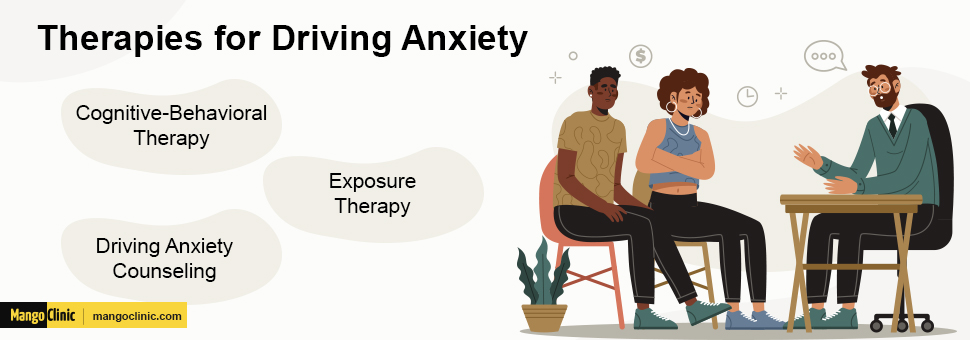
5. Concentrating on Driving Safely
When your mind is all over the place, it is not focused on the road as it should be. Purpose to clear your mind and put your mind on nothing but the road and get where you are going safely. As you practice positive affirmations, your mind will lose the irrational fears and tendency to play out the worst-case scenarios over and over.
6. Focus on Happy Driving
When you are about to drive somewhere, play out the good, happy things in your mind. It may be a productive day at work with colleagues, getting home from work to rest, getting to a nice place for dinner, or other enjoyable experiences. Play sounds that you like to help lift your mood and relax you.
7. Be Consistent with Your Treatment Plan
To completely overcome driving anxiety, be consistent with your treatment plan. Don’t miss your sessions or fail to practice your affirmation and positivity practices. If you opt to try these practices at home, be honest if they are not working and seek professional help.
Consider sharing your problem with a loved one. It may be someone in your household, a friend, or a neighbor. They can accompany you when you need it and just be a positive, affirming voice or presence. They can also be honest with you about whether you need professional therapy and help to control your anxiety.
8. Mark Your Milestones
As you take your journey towards getting over your driving anxiety, do take time to mark and celebrate your accomplishments. Stop and feel good about making a trip somewhere and back even if it is a short distance. Every week or month, give yourself a treat for the progress you are making. Below is one way you can mark your milestones:
For beginners, note down in a journal or notebook that you acknowledge your fear and you made a decision to get over it. Note also when you talked to someone about your problem or made an appointment to get professional help from a licensed mental health care provider.
When you begin your journey, do put down your fears, hopes and note down the steps you will be taking to overcome them. Be specific and put down the times you will be practicing your positive affirmations and your appointments with your therapist if you will be seeing one. Take note also of what you think might detract or distract you and how you will handle it. It could be talking to a friend or neighbor you have shared your problem with.
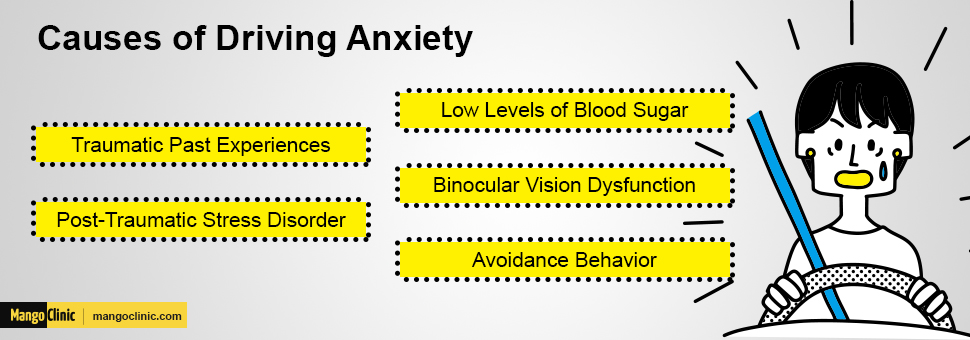
If you are at the intermediate level, go on with targeting your journey with the goal of marking your milestones. You will be at this level when you are eight weeks into your recovery journey. By this time, you should be able to drive even for short distances alone. You can then start working on covering longer distances. The trips you have successfully made so far should encourage you to make longer ones. Maybe you can start by going with a friend.
Keep marking your progress and celebrating your milestones. Also, note down the challenges you are still experiencing. If you have a therapist, share with them so they can guide you through overcoming them and get over your anxiety completely.
At the end of three months or twelve weeks, you will be getting into the expert level. Ideally, by now, you should be able to drive long distances alone without feeling anxious or fearful. Even if they may come up, you should be able to calm and quieten negative thoughts and feelings that may arise when you are about to drive somewhere.
You should be able to get onto new roads and routes without much problem. It is perfectly okay to want to be with someone when taking on new routes. If you have been taking medication, hopefully, you can now do well with a reduced dose with the goal of getting off medications permanently.
As you do this, perhaps you can continue with other non-clinical treatment options. This would include:
- Distract yourself with cool sounds, a podcast, or other forms of entertainment as you drive.
- Take someone with you especially for particularly long trips or new roads.
- Make use of technology like a GPS that will help you get to your destination in a new place.
- Driving on the third lane where you can drive slowly without other impatient drivers honking at you which can trigger your anxiety.
- Practice deep breathing for relaxation.
- Have numbers you can call for help at hand in case you need it. This may be the number of a family member or friend saved on speed dial or even 911.
- Recognizing signs of anxiety and having the plan to pull over, take time to get calm, maybe get out and stretch your legs before completing your journey.
7. What Is the Outlook of People with Driving Anxiety?
Thankfully, with completed and ongoing research into driving anxiety, it is now a condition that can be controlled if not completely cured. Medication and behavioral therapy have also been further developed and have become more effective. For some people, taking a multi-modal approach that combines medication and behavioral therapy is what works for them.
If you have the problem and are not dealing with it, note that you are putting your physical health at risk. You may develop physical symptoms like peptic ulcers, heart-related problems, or problems related to blood pressure as discussed above. If you have these or other chronic problems, anxiety that is left untreated can also make the problem worse.
If your problem is only anxiety and it is not addressed, it can escalate into other mental problems. For instance, anxiety levels may rise to the point that you have a panic attack or you may develop mood disorders like depression because you can’t get a handle on the problem.
Want help with anxiety and other mental problems Click the button below to book your appointment.
The Takeaway
Driving anxiety is one of the different kinds of anxiety disorders. It can affect your life to the point that it affects the quality of your life. For instance, you may be stranded because you can’t drive anywhere. The good news is that it is a problem that can be overcome. Many have sought help, conquered it, and gone on to live normal lives where they can drive to where they need to go. Recovery is a journey that will take time but it can and has been done.
Contact us at Mango Clinic for driving anxiety treatment or click the banner below to book your appointment.





